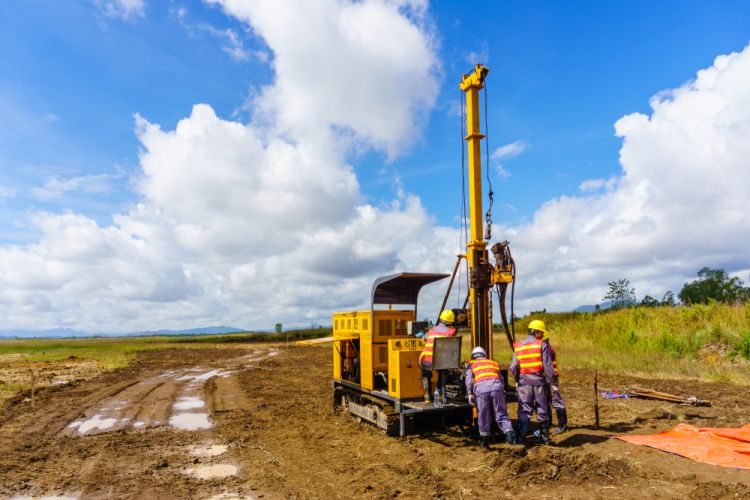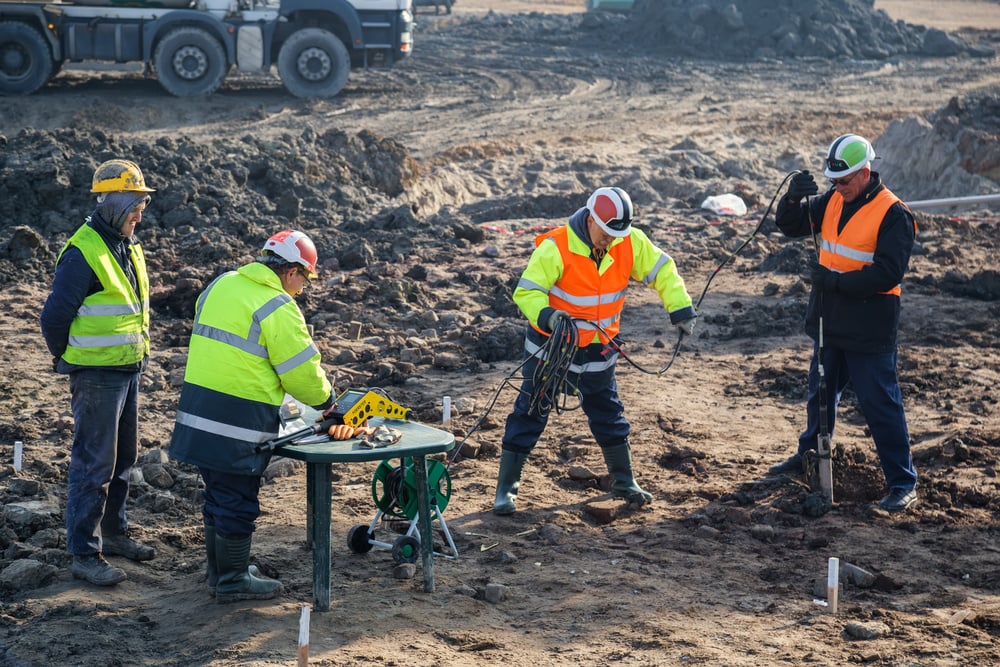Geotechnical Engineering For Construction Projects Things To Know Before You Get This
Little Known Questions About Geotechnical Engineering For Construction Projects.
Table of ContentsExcitement About Geotechnical Engineering For Construction ProjectsGeotechnical Engineering For Construction Projects Can Be Fun For AnyoneTop Guidelines Of Geotechnical Engineering For Construction ProjectsGetting The Geotechnical Engineering For Construction Projects To WorkGetting The Geotechnical Engineering For Construction Projects To WorkWhat Does Geotechnical Engineering For Construction Projects Mean?Geotechnical Engineering For Construction Projects Can Be Fun For Everyone
Principles and Technique of Ground Enhancement. Ground Improvement Concepts And Applications In Asia. Style evaluation in rock auto mechanics.Cengage Understanding, Stamford, 666 p. Atkinson, J., 2007. The technicians of dirts and structures. The Observational Technique in ground design concepts and applications.
The Facts About Geotechnical Engineering For Construction Projects Revealed
Laboratory and area testing plays a critical role in this process. By extracting examples from the earth's subsurface and using a suite of examinations, geotechnical engineers can forecast the behaviour of soil layers and review their suitability for numerous building and construction endeavours. The significance of geotechnical engineering in civil engineering can not be overemphasized, attributable to several elements: The first step in any type of geotechnical research involves figuring out the soil type at the construction site.
Understanding these qualities makes certain that only suitable soil kinds are picked for the growth, thereby preventing possible architectural failings. The structure acts as the bedrock of any type of construction job. Choosing the proper foundation kind is a choice that rests on the extensive evaluation supplied by geotechnical design. This ensures the long life and security of frameworks by suiting the loads they will bear.

Geotechnical website examination is a crucial step in the preparation and implementation of any kind of building and construction project. It involves the collection and analysis of information associated with the physical homes of soil and rock under a recommended construction website. This info is important for the design and construction of secure, steady, and sustainable frameworks.
All about Geotechnical Engineering For Construction Projects
In this blog site, we will dive into the value of geotechnical website investigation, its numerous components, and exactly how it profits building projects. Geotechnical site examination, also referred to as subsurface expedition, involves a collection of tasks aimed at identifying the dirt, rock, and groundwater conditions at a building site. The key objectives are to recognize possible geotechnical dangers, evaluate the design buildings of subsurface materials, and supply referrals for the layout and construction of structures, preserving wall surfaces, and other structures.
The desk research assists in identifying possible geotechnical issues and intending the succeeding fieldwork. This includes observing the topography, drain patterns, existing structures, vegetation, and any kind of signs of instability or disintegration.
Unknown Facts About Geotechnical Engineering For Construction Projects
Shallow examination pits are dug deep into to directly observe and example the soil and rock. This method works for examining the top layers of the subsurface and determining near-surface risks. Non-invasive geophysical techniques, such as seismic refraction, ground-penetrating radar (GPR), and electric resistivity tomography (ERT), are utilized to map subsurface problems and discover abnormalities.
Soil and rock examples collected during the field find out this here examination are subjected to lab screening to identify their physical and mechanical residential properties. Typical laboratory tests consist of grain size evaluation, Atterberg limitations, compaction examinations, triaxial shear examinations, and debt consolidation examinations. These examinations provide necessary information for geotechnical evaluation and design. The data collected from the desk research, site reconnaissance, area investigation, and laboratory testing are examined and translated to create an extensive understanding of the subsurface conditions.
The key benefit of geotechnical site investigation is guaranteeing the safety and security and security of frameworks. By recognizing the subsurface problems, designers can make structures and various other architectural aspects that can stand up to the lots and ecological pressures they will undergo. This decreases the threat of negotiation, subsidence, and architectural failing.
Indicators on Geotechnical Engineering For Construction Projects You Need To Know
This makes certain efficient and risk-free building and construction practices. Geotechnical website examinations are frequently called for by constructing codes and policies.
This info is invaluable for job managers, engineers, and specialists in creating realistic routines, budget plans, and contingency plans. Geotechnical Engineering for Construction Projects. High-Rise Building in a Coastal AreaIn a seaside city, a skyscraper residential structure was planned on a site with presumed loose sand down payments and a high water table. A thorough geotechnical investigation, including borehole boring, CPT, and geophysical studies, was conducted
The Best Guide To Geotechnical Engineering For Construction Projects
Based on these searchings for, the structure style was modified to include deep heap structures extending right into steady strata, and ground enhancement strategies, such as vibro-compaction, were executed to reduce liquefaction dangers. This positive technique made sure the safety and security of the building while avoiding expensive post-construction removal. Facilities Development on a Sloping TerrainA significant infrastructure task, entailing the building of a highway and bridges, was intended on an uneven terrain with steep inclines.

The Leaning Tower of Pisa (Italy), an iconic architectural wonder, is infamous for its unintended tilt from substantial geotechnical problems. The tower's foundation was improperly designed to manage the soft, unstable dirt beneath it, bring about unequal negotiation and Learn More its unique lean. Our world is dotted with remarkable facilities projectsfrom towering skyscrapers to sprawling bridgesall standing testament to the advancement of the various building and construction tools and approaches offered.
Geotechnical engineering is a specific field within civil design that concentrates on researching the actions of earth materials. This branch dives deep into the groundinvestigating just how the soil, rock, and groundwater at a building website can influenceand be influenced bythe facilities that we put up on and into them. Prior to a single brick is laid or a concrete structure poured, geotechnical designers probe right into the earthgathering critical information about the site's soil structure, rock framework, and groundwater levels.
The Main Principles Of Geotechnical Engineering For Construction Projects

is a tool made use of to evaluate the stability and load-bearing ability of heaps during setup, leveraging the concept of wave breeding. It maximizes building effectiveness by giving real-time examinations, thus making sure risk-free and reliable heap structures. Among the sensible applications of geotechnical design involves determining and executing the right techniques for foundation construction.
Pile driving represents greater than the mere act of inserting structural elements right into the ground. However, it is a meticulously coordinated procedure of moving a framework's lots past the less stable soil layers more detailed to the surfacedown to the a lot more significant strata that lie below. In the situation of pile driving, consider how geotechnical designers skillfully utilize this method to uniformly disperse the structure's weight.